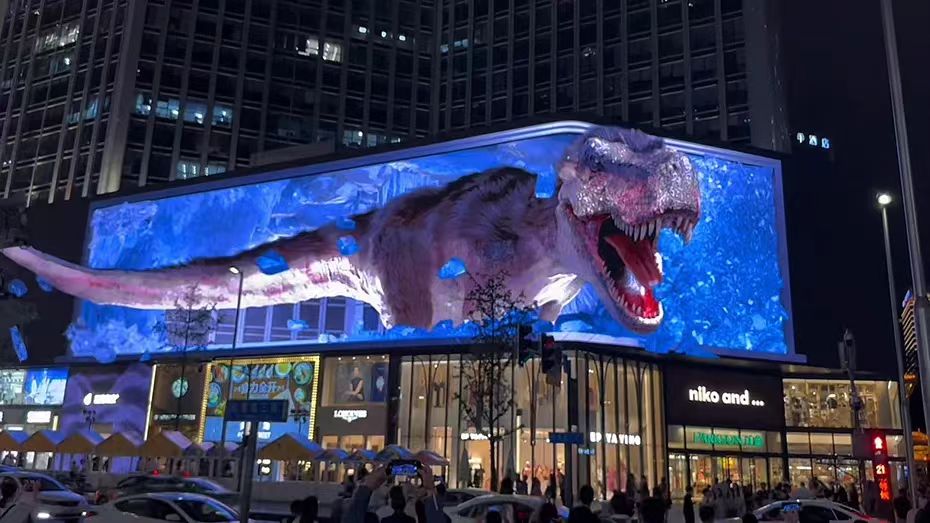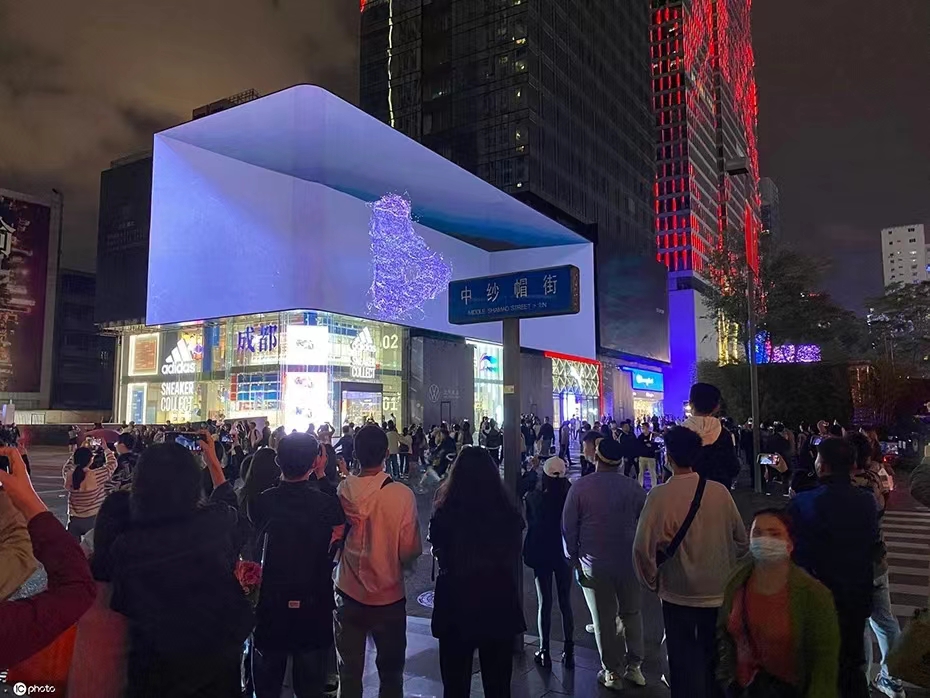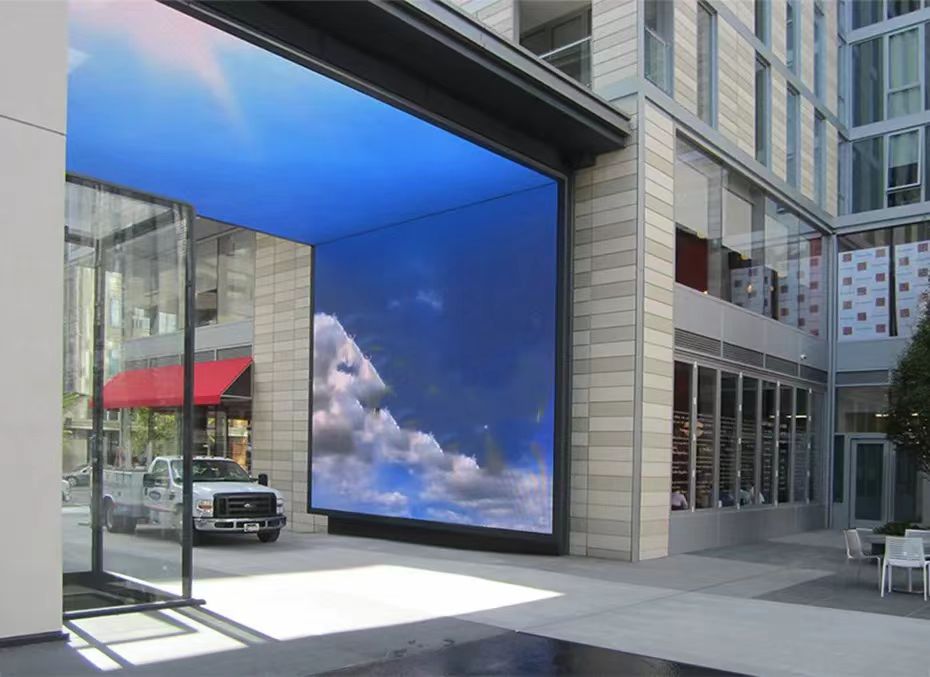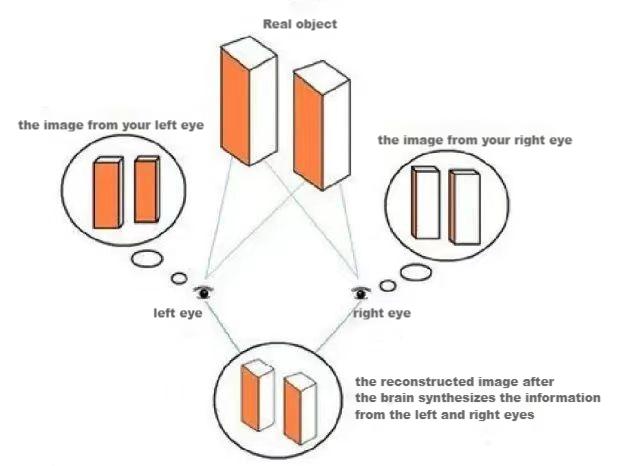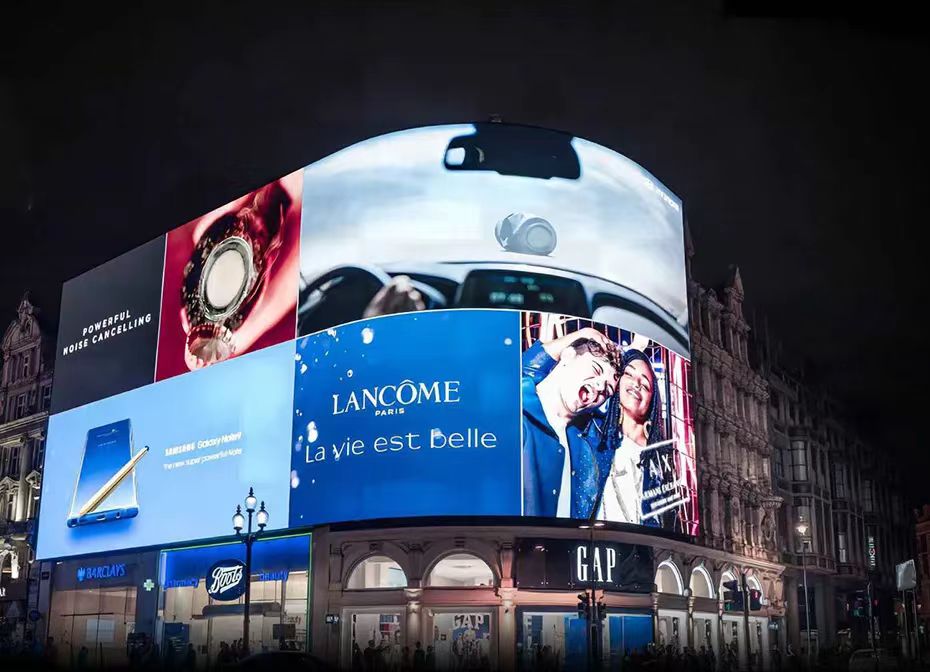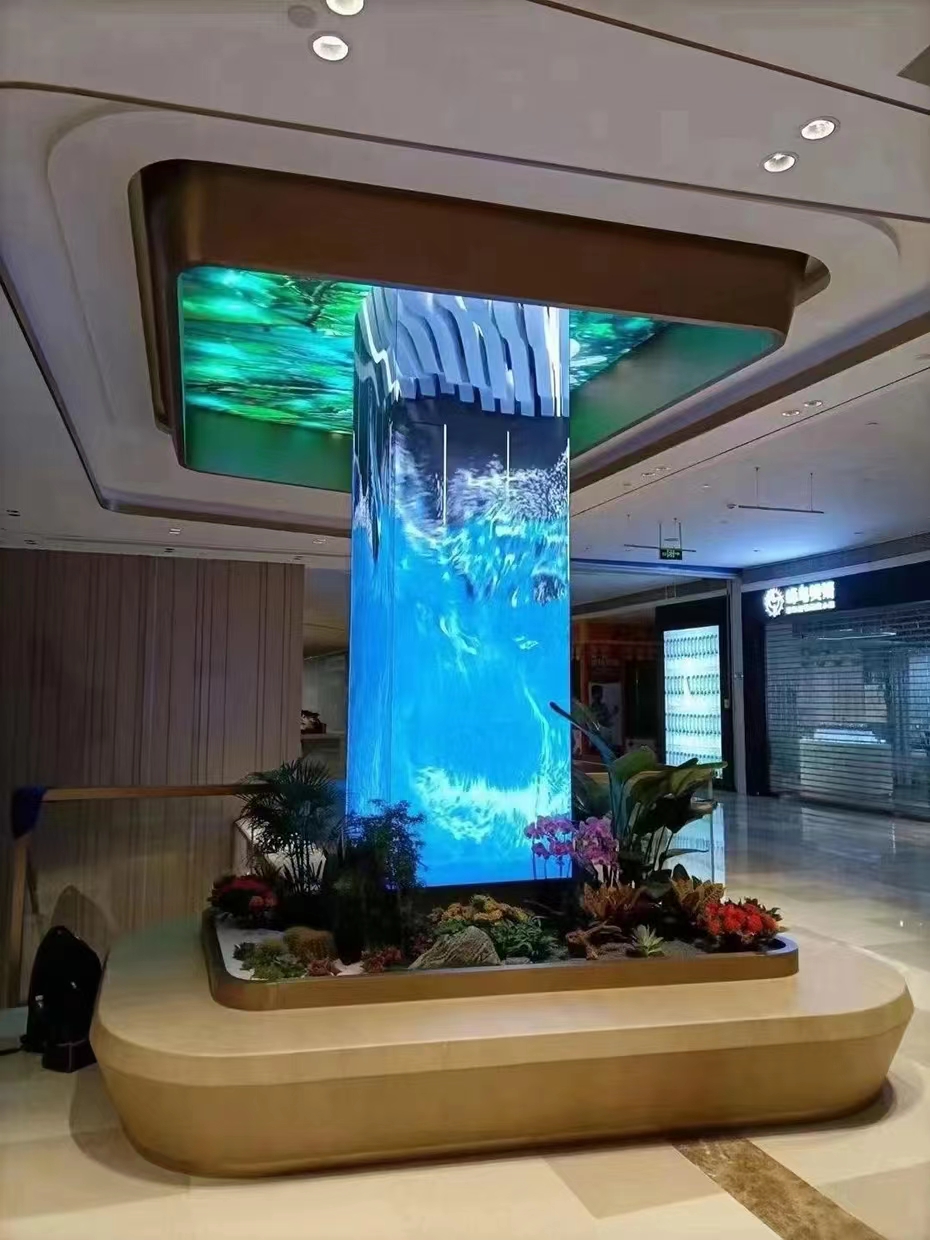3, Analysis of the picture characteristics of the naked-eye 3D display
1) Naked eye 3D display screen strong three-dimensional sense – frame visual effect
The naked eye 3D display brings a strong three-dimensional feeling to the audience with its unique visual presentation. Compared with the traditional LED large screen display, why can the picture provided by the naked-eye 3D display make people feel deeper three-dimensional sense? Some people may think that this is because of the screen’s dog-eared design, but even in the non-dog-eared screen, we can still experience a significant 3D effect.
In order to answer this question, we will first discuss a key element in the naked-eye 3D display technology: framing. The framing effect is that the main part of the finger painting appears to “fly” outside the boundaries of the frame, which cleverly tricks our eyes and thus affects our brain perception.
In daily life, we come into contact with TV, mobile phones and computers and other display devices, the picture is usually limited to a frame. The existence of this border makes us form a consensus: the picture should appear inside the border. The designer is taking advantage of this psychological expectation, artificially adding a visual effect of a border in the picture.
When the subject in the picture is outside the preset frame in our brain, this visual contrast gives us a strong 3D sense. This frame design method not only breaks through the traditional picture boundary limit, but also brings us a new and immersive experience visually.
2) The unique performance of the naked eye 3D display screen — analysis of the distortion phenomenon of the screen
The current so-called naked-eye 3D technology is not actually naked-eye 3D in the true sense. This type of display can only show a strong sense of three-dimensional when the viewer is at a specific Angle and plays a specific video customized for the large screen. Once the viewing Angle or video content does not meet these specific conditions, the picture will appear distorted.
The production of content for the naked-eye 3D large screen is a rather complex process. First of all, the production personnel need to determine the viewing Angle of the audience, which includes standing, sitting and reaching the height of the mobile phone shooting, etc., and synthesize these value ranges to obtain an intermediate value. Then, according to the structure of the screen to extend the space, build the scene, and finally render the video suitable for playing in the large screen. This process requires not only specialized technical knowledge, but also a deep understanding of the viewing habits and visual perception of the audience.
3) The depth charm of the naked eye 3D display screen – the creation of inner space
In the process of pursuing the naked-eye 3D display effect, creating internal space has become an important technical means, which can create a sense of depth of the picture, so as to create a three-dimensional visual effect. In short, the inner space is on the plane or surface, through specific visual elements and design techniques, to build a three-dimensional sense of depth.
As an example to illustrate this concept, we can imagine an otherwise dark plane that, when a few lines are cleverly added to it, instantly takes on a sense of spatial depth. This simple and effective technique is the intuitive manifestation of the creation of inner space.
Whether in the production of flat or curved large screen video content, we can see that this technique of creating internal space is widely used. Through the carefully designed element layout and light and shadow effect, the interior of the screen seems to be given a three-dimensional space structure, so that the audience can feel a strong sense of depth and three-dimensional sense when watching. The use of this technology not only improves the visual effect of the naked-eye 3D display, but also allows the audience to obtain a more immersive viewing experience.
4, Naked eye 3D principle
The principle of naked-eye 3D is based on the parallax principle of the human eye, which creates a sense of depth by providing slightly different images for the left and right eyes. The following is a detailed explanation of the principle of naked-eye 3D, using the point representation and induction:
1) Binocular parallax principle
There is a certain distance between the eyes, so when looking at an object, each eye sees a slightly different image. The brain processes these two different images to create a sense of three-dimensional.
2) Naked-eye 3D display technology
The naked eye 3D display technology utilizes special optical structures and display methods that allow the left and right eyes to see different images at the same time, without the need to wear any auxiliary devices such as 3D glasses.
3) Mainstream technical means
Slit raster: A slit raster is placed in front of the screen to separate the visible picture of the left eye and the right eye by blocking, forming a 3D image.
Cylindrical lens: Using the refraction principle of the lens, the pixels corresponding to the left and right eyes are projected to the left and right eyes respectively to achieve the effect of image separation.
Pointing to the light source: Accurately controlling two sets of screens to project images to the left and right eyes is also a way to achieve eye-free 3D.
4) Other technical means
Optical screen technology: A series of vertical streaks are created using a switching display, a polarizing film, and a polymer display layer to create a parallax barrier that allows the left and right eyes to view different images.
Lorentz’s principle: Light is refracted through tiny bumps on the screen so that the left and right eyes see different pixels.
Technical challenges and developments: Glasses-free 3D technology still faces some challenges, such as viewing Angle limitations, resolution loss, and manufacturing costs. With the advancement of technology, the viewing experience of naked-eye 3D display devices will continue to improve, and the application field will be further expanded.
By simulating the parallax principle of human eyes, naked-eye 3D technology uses a variety of optical and display technology means to realize the three-dimensional image that can be viewed without wearing auxiliary equipment. This technology has a wide range of application prospects in entertainment, advertising, education and other fields.
(To be continued)
Post time: Jul-03-2024



